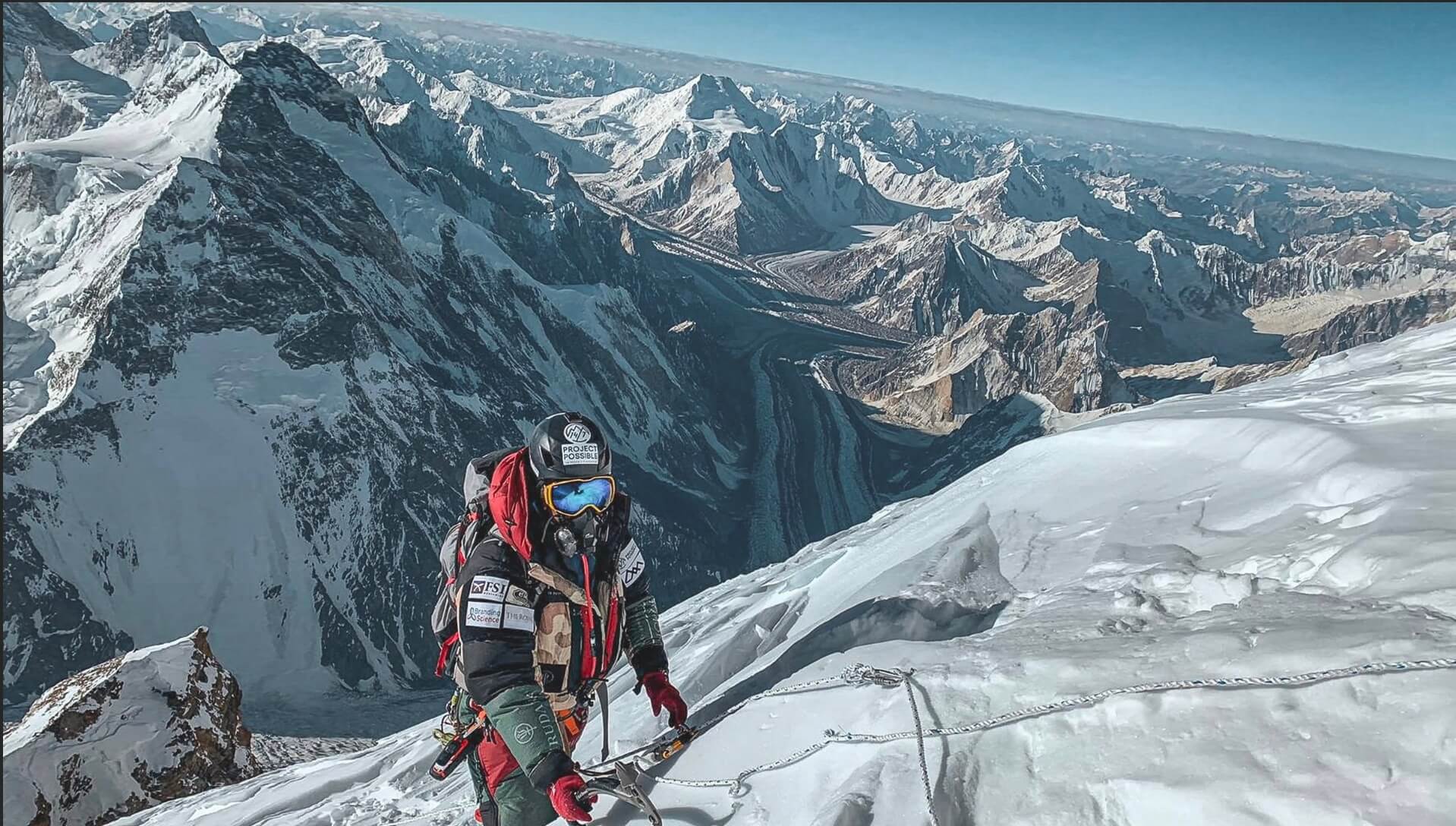All-Nepali winter first on K2

Nepali high altitude guides used to assist mountaineers from other countries make record-breaking climbs of the world’s highest peaks, but on 16 January an all-Nepali team set its own record with the first ever winter ascent of K2.
Altogether ten Nepali mountaineers from three different expeditions made it to the summit of the world’s second highest mountain located in Pakistan — the last of the 14 peaks in the world above 8,000m high that was yet to be climbed in winter.
The Nepalis had decided not to take individual credit for the climb, but claim the achievement on behalf of Nepal. The group stopped 10m below the top, and took the final steps together to be on the top simultaneously.

The climbers on top on Saturday were Nirmal Purja, Gelje Sherpa, Mingma David Sherpa, Mingma G, Sona Sherpa, Mingma Tenzi Sherpa, Pem Chhiri Sherpa, Dawa Temba Sherpa, Kili Pemba Sherpa, and Dawa Tenjing Sherpa. They were originally from three different teams, but came together to share the glory for Nepal, singing the national anthem as they took the final steps to the summit together.
"A very special moment. We are proud to have been a part of history for humankind and to show that collaboration, teamwork and positive mental attitude can push limits to what we feel might be possible," wrote Purja, on Facebook.
Mingma Gyalje Sherpa wrote on social media just before the final push: “We have made Nepal and Nepal’s climbing community proud,”


The Nepali climbers on K2 are from an all-Nepali expedition led by Mingma Gyalje Sherpa, Nims Purja’s team, and a Seven Summit Treks group.
Ten climbers from Nepal left Camp 4 at 1AM on Saturday, and negotiated the dangerous Bottleneck couloir, and made the traverse, fixing ropes as they went and got to the top before 5PM on Saturday.
However, because of the late hour that they got to the summit, the descent down ice slopes in the dark, cold and wind has been challenging for the exhausted climbers.
"Unfortunately, we lost Sergi. Best climber and very good friend of us," wrote Chhang Dawa Sherpa on social media. Spanish Climber, Sergi Mingote, fell into a crevasse suddenly while descending from C1 to Basecamp, which is supposed to be a relatively less dangerous strip. He had been attempting to climb all 14 highest peaks without supplementary oxygen within 1000 days, when he had been forced to abandon expeditions due to Covid outbreak, last year.
At 8,611m, K2 is regarded as being more difficult than Mt Everest because of the highly technical nature of the climbing required near the summit. In winter, with temperature plunging to below -40 Celsius and the 200km/h jet stream blowing full blast near the summit, the ascent was regarded as impossible.

The expeditions this year have been battling extreme cold and high winds that last week blew away tents and equipment stored at Camp 2 for the summit push. After that, the Nepali expeditions decided to work together and claim the success collectively for their country.
The climbers were all trying to use Saturday’s weather window with relatively less wind and sunny skies before a westerly front moves in and the winds pick up again from Sunday.
K2 is so dangerous that one in every four who have attempted to climb it have died in the attempt. Ever since its first ascent in 1954 by an Italian team, 367 mountaineers have reached the summit before today, with 87 fatalities.
The Icelandic climber John Snorri Sigurjonsson is also on the mountain with Pakistani climber Muhammad Ali Sadpara and his son.

The ex-Gurkha commando, Nims Purja, smashed the previous world mountaineering record by climbing the world’s 14 highest mountains in 6 months and 6 days when the previous record was 7 years 10 months 6 days. He was on K2 last summer, but returned to the mountain to make the same ascent in winter and reportedly planned to fly down from the summit in a paraglider.
In his book, Beyond Possible, Purja has written that he wanted to prove that Nepali climbers were as good as Western ones, and wondered if his feat would have got more publicity if he had been a European.
He wrote: ‘Even though I was technically a British citizen, my nationality had positioned me under the radar of almost everyone. It is highly likely that if I’d been a climber from America, Great Britain or France, then every outlet in the world would have noticed the effort.’




